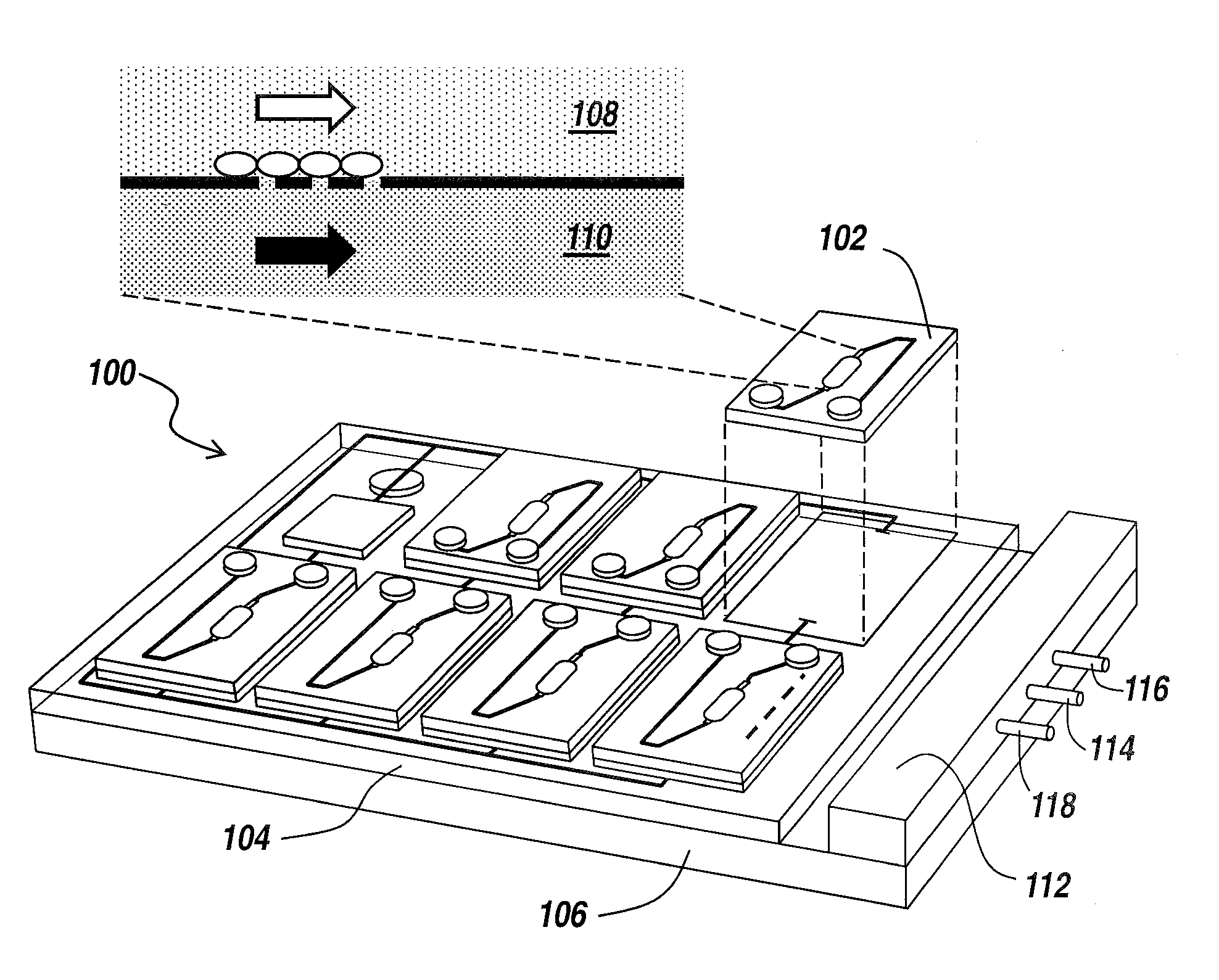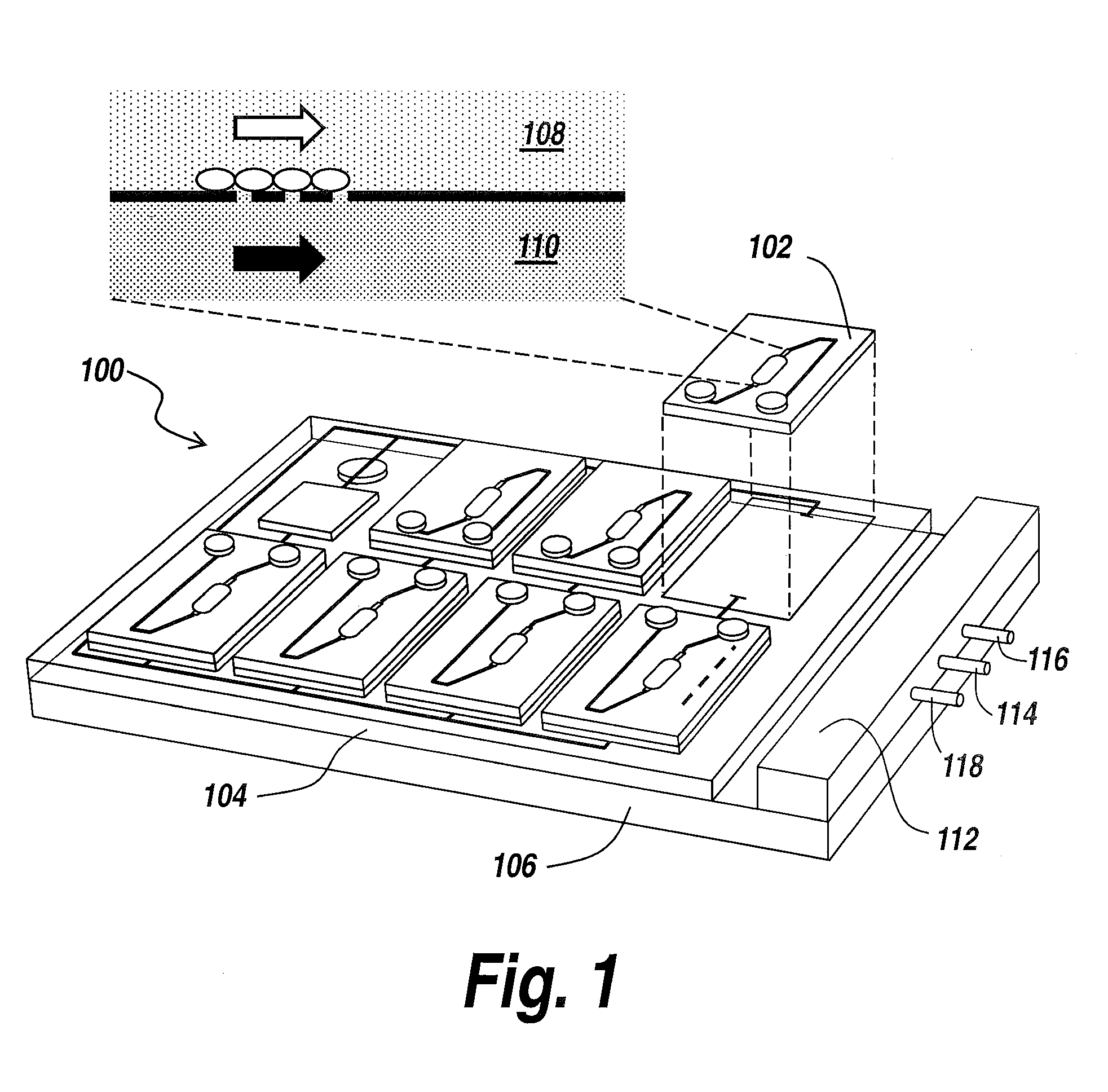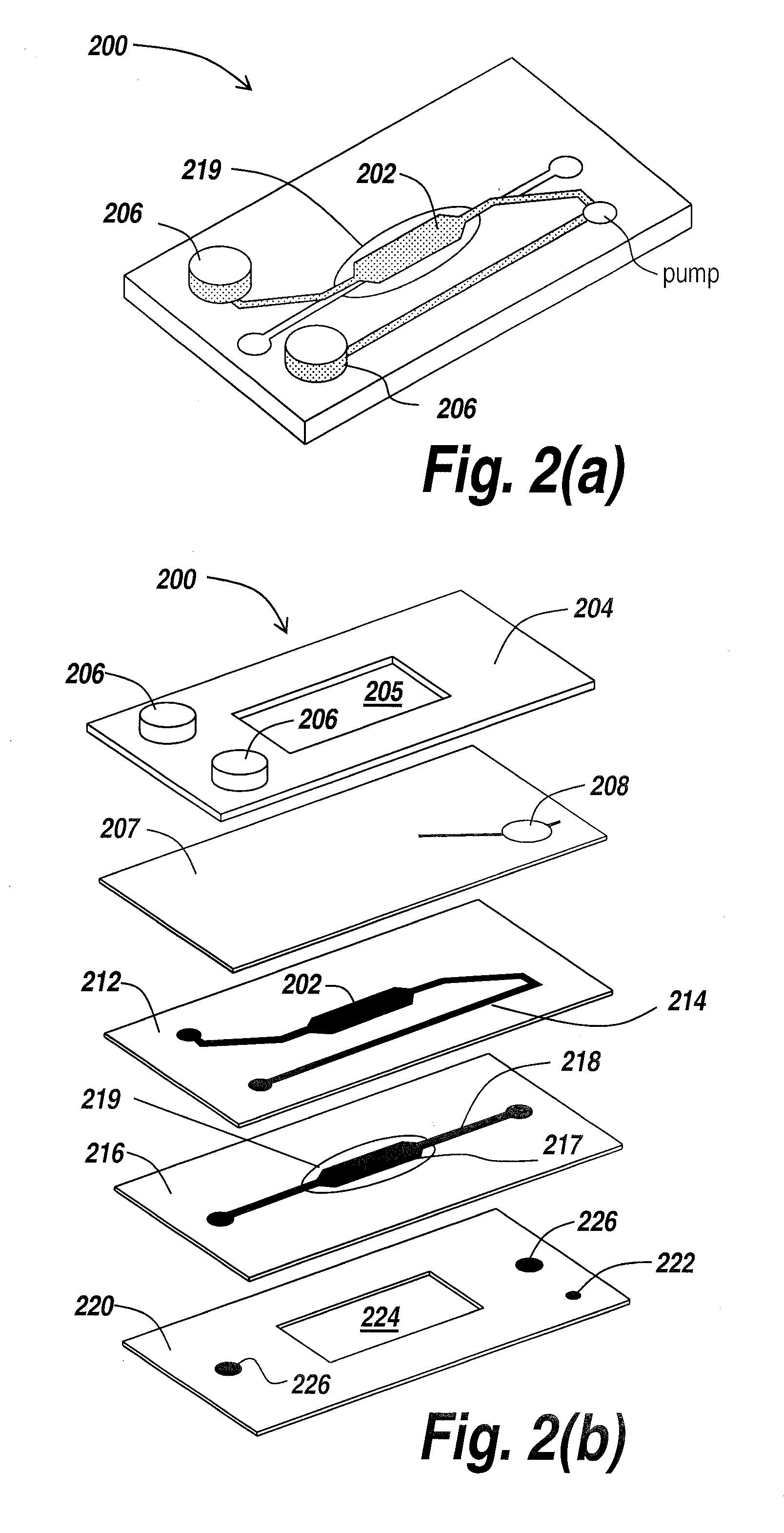Human emulated response with microfluidic enhanced systems
a microfluidic and response technology, applied in the field of human or other mammalian model systems, can solve the problems of long time to market for successful drugs, drug failure, lack of effective pre-clinical models and assay systems,
- Summary
- Abstract
- Description
- Claims
- Application Information
AI Technical Summary
Benefits of technology
Problems solved by technology
Method used
Image
Examples
Embodiment Construction
[0033]As used herein, the term “fluid” refers to air, liquid, or a combination thereof.
[0034]As used herein, the term “fluidic” refers to system or apparatus adapted for transport of a fluid therethrough.
[0035]As used herein, the term “microfluidic” refers to a fluidic pathway that includes at least one dimension of less than one millimeter.
[0036]As used herein, the term “pathogen” refers to microorganism such as a virus, bacterium, prion, or fungus that may cause disease in a host organism.
[0037]As used herein, the term “agent” refers to any chemical or biological composition intended to elicit a response from the cells of the microfluidic system of the invention such as a drug, toxin, or pathogen.
[0038]As used herein, the term “organ” refers to a group of cells or tissues that perform a specific function or group of functions.
[0039]The present invention provides a microfluidic system that enables the studying and evaluation of cell function in vitro under conditions closely resemb...
PUM
| Property | Measurement | Unit |
|---|---|---|
| thick | aaaaa | aaaaa |
| thick | aaaaa | aaaaa |
| pore size | aaaaa | aaaaa |
Abstract
Description
Claims
Application Information
 Login to View More
Login to View More - R&D
- Intellectual Property
- Life Sciences
- Materials
- Tech Scout
- Unparalleled Data Quality
- Higher Quality Content
- 60% Fewer Hallucinations
Browse by: Latest US Patents, China's latest patents, Technical Efficacy Thesaurus, Application Domain, Technology Topic, Popular Technical Reports.
© 2025 PatSnap. All rights reserved.Legal|Privacy policy|Modern Slavery Act Transparency Statement|Sitemap|About US| Contact US: help@patsnap.com



